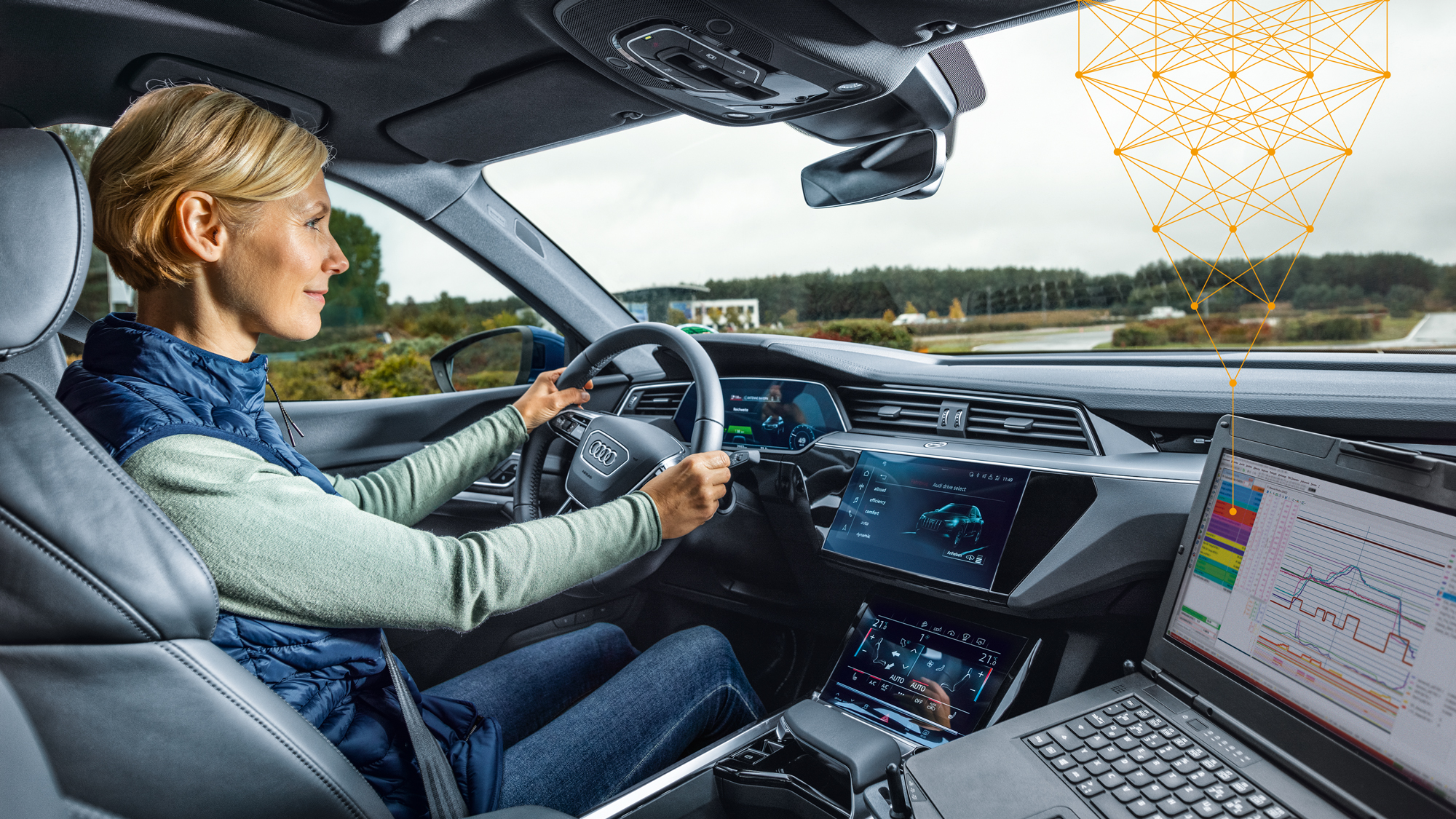Transfer Learning Takes Digital Development to a New Level
Vehicle components are becoming more and more complex, cars more and more personalized and at the same time more intelligent. One of the biggest drivers: the steadily growing number of driver assistance systems. As the number of systems, models and combinations increases, so too does the amount of work involved in vehicle development. This is why IAV is conducting intensive research into a promising solution approach known as transfer learning.
An average passenger car today consists of around 10,000 individual components. All these components have to fit together. The coordination process, however, is costly and time-consuming. What tolerances do individual components, systems or elements of the powertrain have? How do they behave when operating under full load? At what mileage do they have to be replaced? In order to answer questions like these, vehicle design and development requires a vast amount of data, some of which must be collected at great expense.

«The basic idea behind transfer learning is that although individual projects may not have enough data to solve a problem in a data-driven way, the projects as a whole do.»
— Deep Learning expert at IAV
Transfer learning in practice saves time and money
By successively transferring the transfer learning approach from theory to practice, several specialist areas can benefit, such as predictive maintenance, in which measurement data provides real-time information on whether and when maintenance or repair is required. The more projects and the more data, the better. “The basic idea behind transfer learning is that although individual projects may not have enough data to solve a problem in a data-driven way, the projects as a whole do,” explains Krokotsch.
Transfer learning also offers added value for the programming and design of assistance systems. At the beginning of the development phase, assistance systems run through simulations. Due to the increasing connectivity of different assistance systems and components, this training is a labor-intensive process, but simulation is a reliable and cost-effective data source. As the process progresses, practical tests of the new assistance systems are required. By means of transfer learning, the leap from simulation to the road can be made with relatively little additional data.
“All in all, data-driven development gives us tools to work even more efficiently and with increased agility,” Krokotsch is sure. “We save our customers time and money in development, because pushing a digital engine beyond its limits is easier and more resource-efficient than doing so with a real engine from an OEM.”
Complete potential not yet exhausted
In the step-by-step application of transfer learning, IAV benefits from cross-industry experience, as in the energy sector, and can transfer the method to a wide range of use cases. “We are working on several levels to integrate this concept into our processes and develop it further,” says Krokotsch. At present, existing AI models are mostly retrained on the initial problem of very similar target problems, since this transfer requires less additional data. In addition, the risk of a “negative transfer,” i.e. a logical error of the AI due to the transfer from the source problem to the target problem, is lower.
«It's all about empowerment – with the transfer learning method, we want to give our colleagues new tools to continuously improve our engineering services for our customers.»
— Deep Learning expert at IAV
clusively applied, where the input data contains the same metrics. Such input data can be for example RGB images, which are composed of the three primary colors red, green and blue. If we want to transfer such a three-channel RGB image to a single-channel near-infrared (NIR), we refer to heterogeneous transfer learning. This is also the case when an already developed model is transferred from a source motor to a new target motor that has different sensors. As soon as a sufficiently high process reliability is available for heterogeneous transfer learning, the optimization potential associated with the method increases further.
However, transfer learning cannot and should not replace the results from practical tests with real models and the experience of engineers and applicators. “Only with the expertise and input of the applicator can we fully exploit the full potential of transfer learning. It tells us what the system is doing or how it can be designed,” Krokotsch explains. “It’s all about empowerment – with the transfer learning method, we want to give our colleagues new tools to continuously improve our engineering services for our customers.”
The article was published in automotion 03/2020, the automotive engineering magazine of IAV. Here you can order the automotion free of charge.
